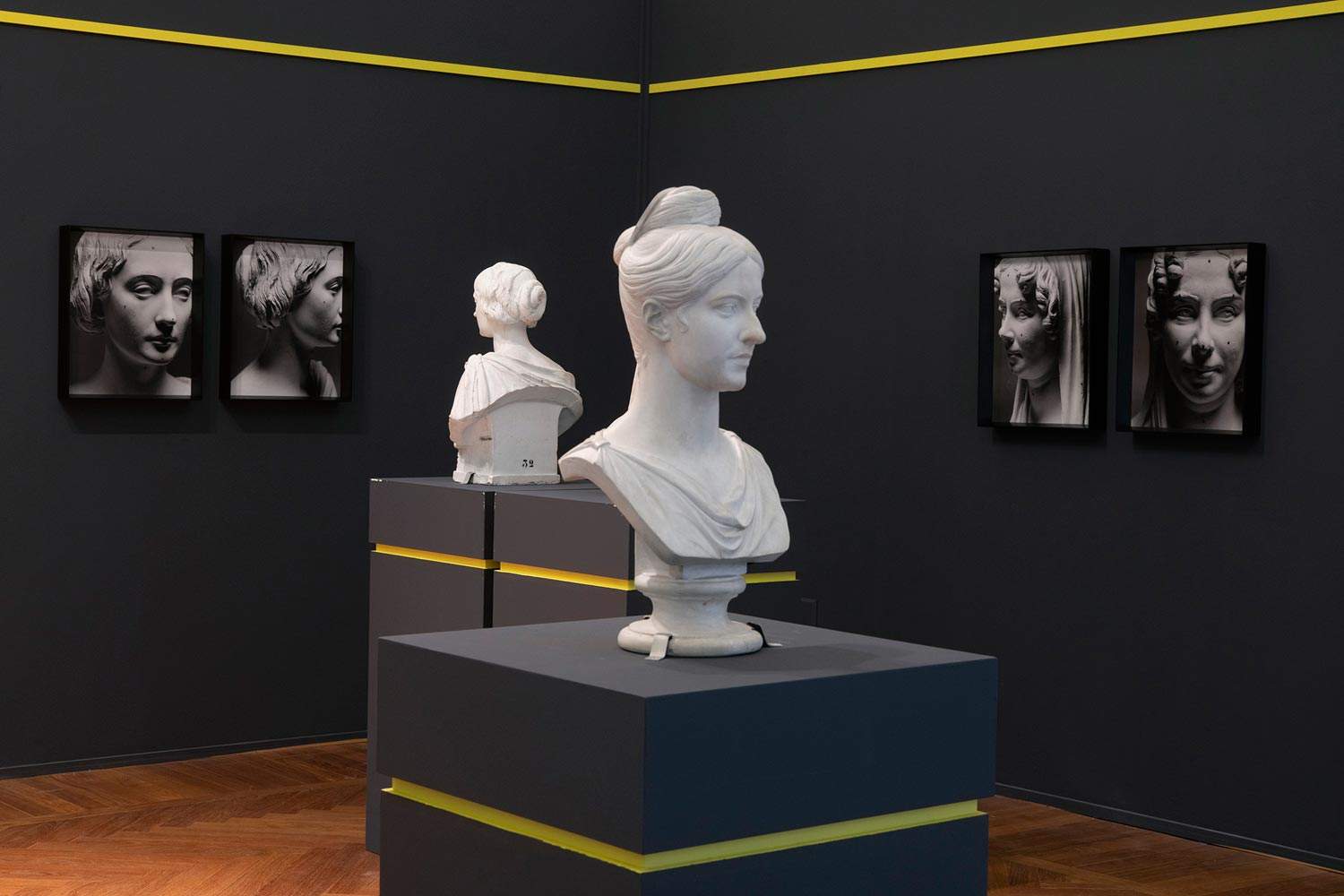From June 28 to Nov. 12, the Museum of Rome at Palazzo Braschi hosts the exhibition Vis-à-vis. Tenerani Spina. Dialogue in Images, which presents twenty-five plaster portraits by Pietro Tenerani (Carrara, 1789 - Rome, 1869), one of the most significant sculptors of the 19th century, reinterpreted by photographer Luigi Spina. The dialogue intends to bring a new admiration to Tenerani’s sculptures, in many cases never previously exhibited, of which Spina’s photographs (a diptych for each portrait) made on black-and-white film and personally printed, highlight details that can sometimes be missed. The exhibition is promoted by Roma Capitale, Assessorato alla Cultura, Sovrintendenza Capitolina ai Beni Culturali and is curated by Fabio Benedettucci, with organization by Zètema Progetto Cultura.
An itinerary between sculpture and photography that, in addition to aiming to contribute to the enhancement of one of the most relevant nuclei of the Museum of Rome, namely the Tenerani gipsoteca, also wants to offer the possibility to take a closer look at Luigi Spina’s photographic survey, carried out on portraits of nobles, intellectuals, artists and religious figures, all at the center of Roman society in the mid-19th century, of which Tenerani was a leading exponent. A cross-section that will come to life again, thanks to the photographic investigation of Spina, author of numerous studies that always have the same common thread, namely the search for beauty and perfection, in all spheres but especially in sculpture.
Tenerani’s gipsoteca was originally located in the gallery designed by Carlo, the sculptor’s only male son, on Via Nazionale. The collection includes models, sketches and studies, evidence of the sculptor’s entire artistic output, and should be counted among the greatest examples of 19th-century plaster cast collections along with those of Canova in Possagno and Thorvaldsen in Copenhagen. To further enhance the plaster cast collection, a selection of which is already on the Museum’s itinerary, the exhibition Vis-à-vis.
A sculptor who died in 1869 and a photographer born practically a century later, in 1966, are the two artists who are the protagonists of this exhibition, with different means of expression and distant from each other in time, united by their research on the human figure: a dialogue between a sculptor capable of rendering in plaster the smallest details of a face and a photographer able, through light, to bring out those details. By a precise choice, among the approximately one hundred and fifty portraits by Tenerani in the collections of the Museum of Rome, the exhibition does not display those of the most illustrious personalities such as kings, emperors or pontiffs: in fact, it was preferred to present a series of portraits that tell the story of the articulate Roman society of the mid-nineteenth century. They are exponents of the city’s noble families, foreign patrons, men and women, in classical, modern or bare-chested clothing, in busts or in herma form. With many of them Tenerani was on friendly terms; for others, simply being depicted by him in a portrait represented the achievement of high social status. Of many of the effigies, personal stories are told in the exhibition, often through period accounts.
With Tenerani’s figures, Luigi Spina wished to establish a direct relationship, in a dialogue through images in which light becomes a source of expression and at the same time a tool for knowledge of the works, since details of the sculptures are captured in the photographs that are often otherwise difficult to see. Spina’s photographs are characterized by a strong three-dimensional impact, which accentuates the emotional component of each character.
In the rooms on the second floor of Palazzo Braschi, Tenerani’s portraits are placed in front of Luigi Spina’s images, in a path in which they are divided by theme. At the opening of the exhibition, after a self-portrait by the master from Carrara, three busts made in 1850 mirror the intellectual and artistic society of that precise historical moment; they are followed by a series of portraits of members of the Roman and international nobility, then three busts intended for funerary monuments give life to an ideal Spoon River figured by Tenerani.
After the busts of statesmen Charles Wentworth, an Australian, and José Gutierrez de Estrada, a Mexican, examples of the commissions that came to the sculptor even from cultural spheres distant from Europe, a group of protagonists of the Italian and international cultural salons of the mid-nineteenth century is presented, from Zenaide Wolkonsky to Carlotta Lenzoni to Leonilla Bariatinsky, the only one among the figures in the exhibition to have known the twentieth century.
Concluding the itinerary is a nucleus of portraits made in almost half a century of activity, to let visitors grasp the different souls of the Tuscan master, which Luigi Spina, with the sensitivity that has characterized his artistic production for more than two decades, has managed to bring to light. For all information you can visit the museum’s website.
 |
| Rome, at the Palazzo Braschi Museum, Luigi Spina's photos in dialogue with Tenerani's plaster casts |
Warning: the translation into English of the original Italian article was created using automatic tools. We undertake to review all articles, but we do not guarantee the total absence of inaccuracies in the translation due to the program. You can find the original by clicking on the ITA button. If you find any mistake,please contact us.